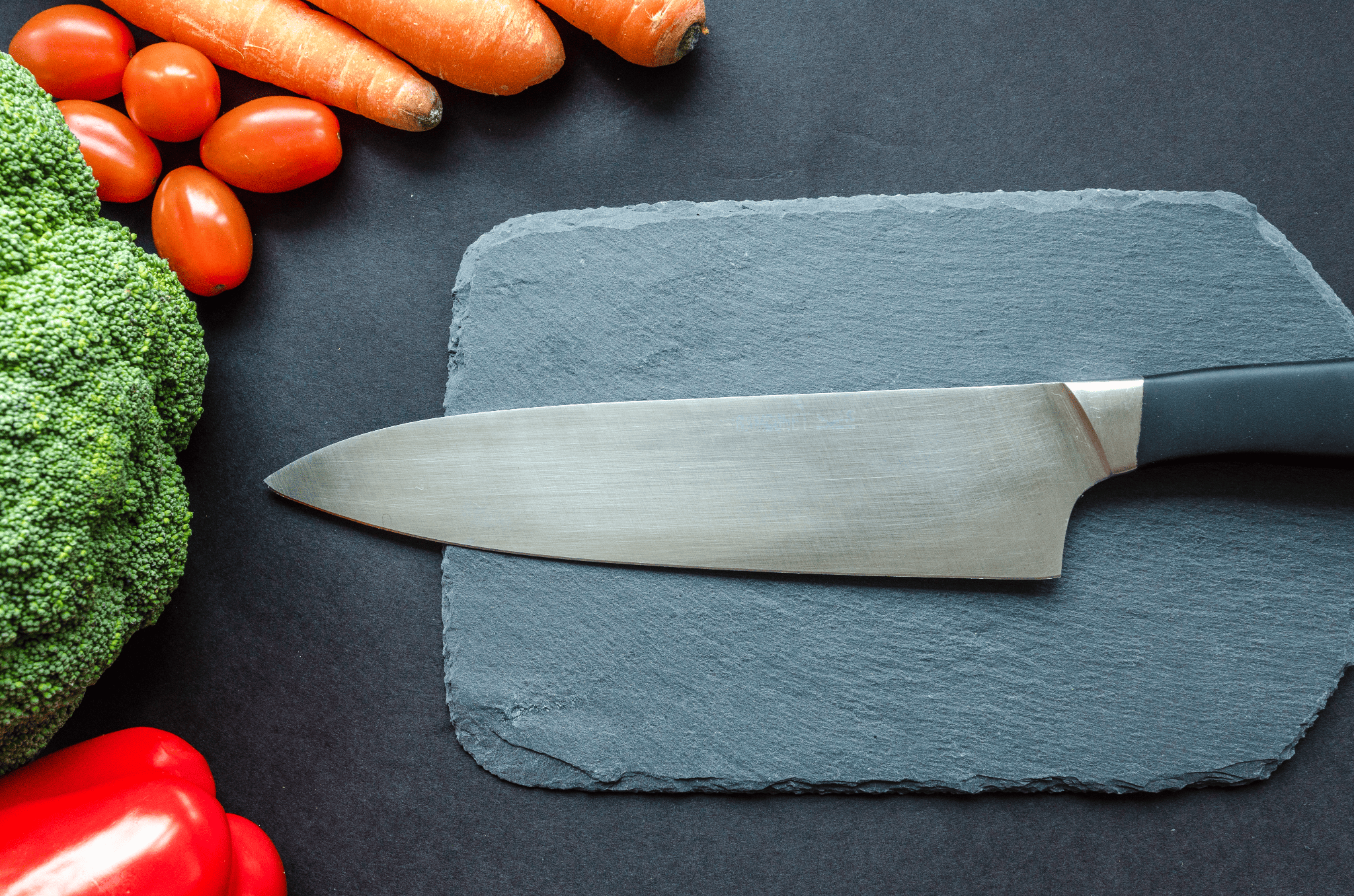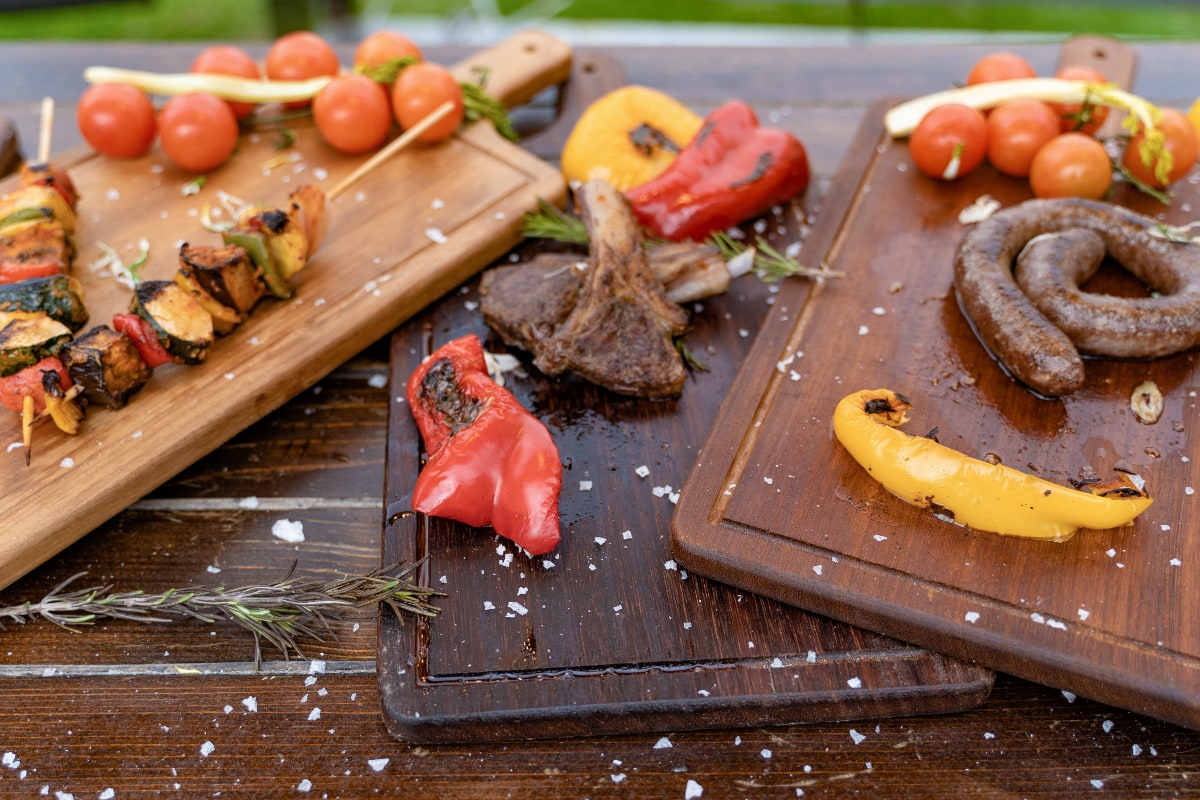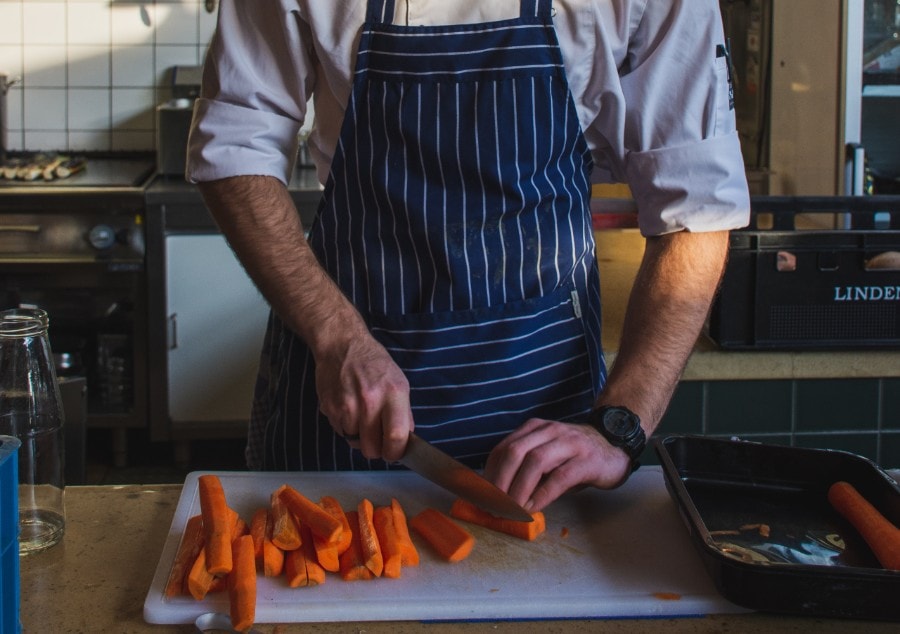There is a lot of debate in the culinary world over which is better the serrated vs non serrated steak knives. Of course, both have their advantages and disadvantages, but which one is the best option for you?
In this blog post, we’ll explore the differences between these two types of knives and discuss which one is a more acceptable option for your kitchen. Stay tuned to learn more!
What are Serrated Steak knives?
They are the most popular and common choice of steak knives because it’s believed that they can cut through food smoothly, almost effortlessly.
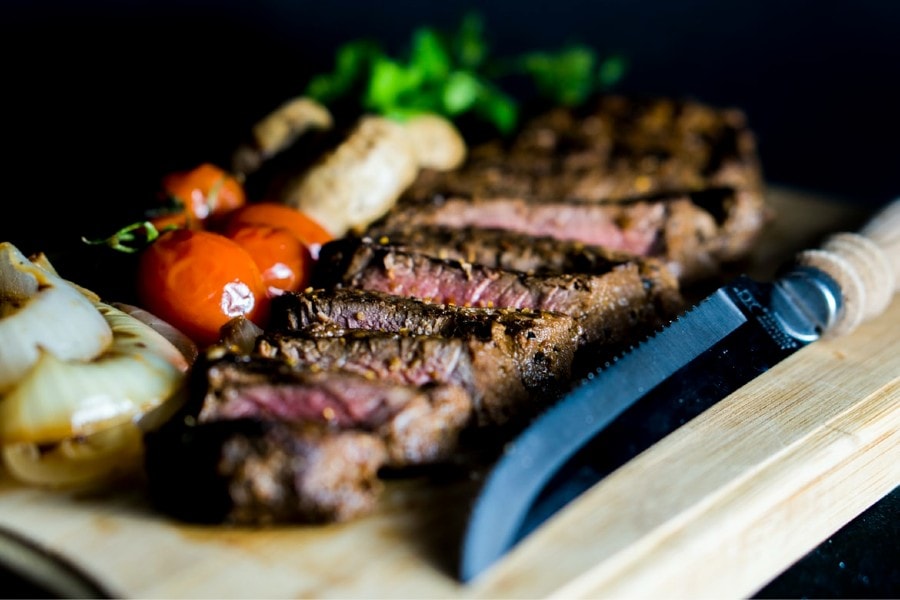
Serrated steak knives are knives that have teeth-like serrations on the blade. This knife is designed to cut through tougher meats, such as steak, with ease. The serrations help to grip the meat and cut through it without tearing or shredding it.
The scalloped edging on these knives help create a smooth, clean cut as it carves into the food and cuts through meat with great force.
Serrated Steak knives – Pro’s
Cuts Through Meat Easily (Without Shredding/Tearing) – You can cut through anything with a serrated knife, from hard crust foods like steak and bread to fruits that have thick rinds. These knives are versatile; you might even want one for your artisanal cheeses.
Stay Sharper for Longer Periods of Time – The best knives are often serrated because they allow for an even distribution of pressure when you cut. It means that, if one edge is sharper than the other, there will be less risk in maintaining its effectiveness over time due to how fine these teeth can slice through rigid materials like meat or wood with ease.
Serrated Steak knives – Con’s
Require a Bit More Maintenance – Because serrated knives are designed to grip and tear through materials, they can often become dull quickly if not cared for properly. To keep them performing at their best, you must hone and strop your serrated knives as often as possible (every few weeks).
Maybe Harder to Find – Not all kitchen stores carry serrated steak knives, so you may have to do a bit more digging if you’re looking for this type of knife.
What are Non-Serrated Steak knives?
Non-serrated steak knives are knives that don’t have serrations on the blade. They are typically very sharp and smooth, with a fine edge that can cut through meat cleanly.
With a razor-sharp edge that cuts-up right through meats without tearing the fibers, non-serrated steak knives are preferred by many meat enthusiasts because they keep all of their flavorful juices intact with each slice. In addition, it means you’ll get a clean cut.
Non-Serrated Steak knives – Pros
Cutting up Steaks at an Angle – If you want to get that perfect, well-defined slice of steak without any deflective teeth marks on your plate, then it’s time for non-serrated knives.
For example, if all else fails and we need our cuts straight across the board – like when making shavings or even brunoise (a French term meaning “to break up”) fruits/veggies into smaller pieces–then go ahead with this type of knife.
Keeps Each Bite More Intact – One of the biggest mistakes many people make when cooking steak is not using a sharp enough knife. The non-serrated edge on this type of blade helps keep each bite more intact and means you’ll get fewer juice leaks from your plate, in addition to having cleaner cutlery after eating.
More Common – These knives are a lot more common than serrated steak knives, so you won’t have any difficulty finding them at your local kitchen store.
Non-Serrated Steak knives – Cons
Sharpen Often – While non-serrated knives go through a lot of wear and tear, they need to be honed more often than serrated blades.
The steak itself will cause your blade to lose its edge because it has less surface area for cutting, which means there’s also less material between you and the dish, so it requires sharper edges on both sides not to damage anything or anyone.
Serrated Vs Non Serrated steak knives
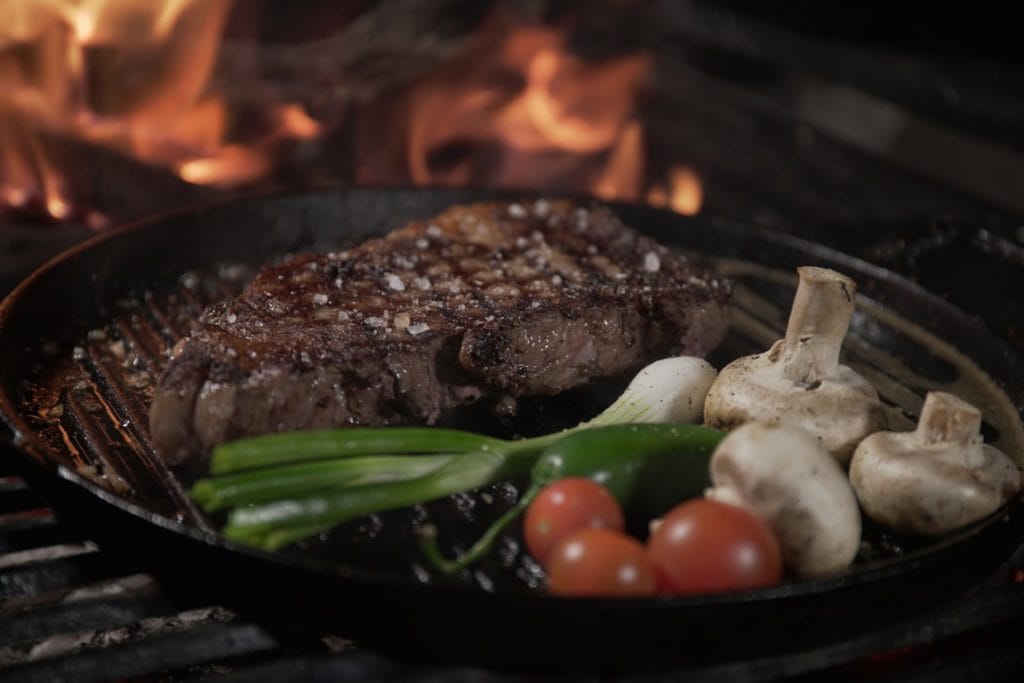
Performance Comparison
Serrated steak knives are a must-have in any kitchen. They can be used for cutting bread, fruits, or meat with their versatile design that makes them ideal for cutting downward on different types of foods like roasts and more.
Meanwhile, there is nothing more satisfying than having non-serrated steak knives when cutting up a steak. A serrated blade can leave small pieces of food behind as you try and cut through your meat, resulting in less juice getting into each bite–and that doesn’t sound all too good. But, on the other hand, plain non-serrated knives have smoother edges, making them perfect for those who prefer their steaks medium rare without any leftovers sitting on top.
Non-serrated knives are better suited for cutting straight across the meat, while serrated knives are ideal for butchering or cutting at an angle.
Sharpness Retention
When it comes to performance, serrated steak knives are the clear winner. Their sharp serrations help them grip and tear through meat easily, while non-serrated knives can sometimes struggle to cut through without shredding or tearing the flesh.
Additionally, serrated steak knives can stay sharper for more extended periods, making them a better choice for those who want a knife that can easily handle tough meat cuts. However, serrated steak knives require more maintenance to stay sharp, and they may be harder to find than non-serrated knives.
Ultimately, the choice between serrated and non-serrated steak knives depends on personal preference. Some people prefer the clean, straight cuts made with a non-serrated knife, while others find that the serrations on a serrated steak knife help them grip and cut through meat more efficiently.
Ease of Sharpening
The biggest downside of serrated knives is that they’re adamant about sharpening. It happens because their blade has rows or ridges near the edge, making it difficult for someone who doesn’t have experience with sharpening tools.
Non-serrated steak knives are a lot easier to sharpen; however, they require regular maintenance as they are used for hard-cutting.
Another Essential Tool: Serrated Bread Knives
A bread knife is an essential kitchen tool, and a serrated or non-serrated steak knife can be used for many of the same purposes. Serrated knives are great for cutting through hard-crusted breads and the serrations help to grip and tear the bread without tearing or shredding it. Non-serrated knives are perfect for slicing through softer breads and bagels without leaving any pieces behind. Both options can be used for spreading butter, cream cheese, and other toppings on breads and toast.
So which one should I get?
Let’s be honest; both knives are great when it comes to steak! It will always come down to your personal preference.
The serrated knife is an excellent choice for those who want their meat cooked through but not harsh or chewy. However, you may need some practice sharpening it yourself, so head to an expert if you can’t handle the maintenance.
If you like rare, juicy steaks, then the non-serrated knife is for YOU. Sharpen them just once with an electric sharpener, and remember: manual grinding always beats any machine.
Why not have a set of each? You never realize when the need will arise for either one.
Frequently Asked Questions
Can you sharpen serrated steak knives?
Yes, serrated steak knives can be sharpened with the right tools and techniques. However, it can be challenging to get a sharp edge on them, and they require more maintenance than non-serrated knives.
Do serrated steak knives get dull?
Yes, serrated steak knives can become dull over time if they’re not properly maintained. It can be done by sharpening them regularly or using a honing rod to align the serrations.
Are serrated steak knives better for tougher cuts of meat?
Serrated steak knives can grip and tear through meat easily, making them a better choice for those who want a knife that can handle tough meat cuts with ease. However, serrated steak knives do require more maintenance to stay sharp.
Do serrated steak knives require more maintenance?
Yes, serrated steak knives require more maintenance to stay sharp. It includes regular sharpening and a honing rod to keep the serrations aligned.
What about bigger serrated bread knives?
For those who need an even larger knife for slicing thick pieces of bread, serrated bread slicer knives are a great option. These knives are much larger than steak knives and can easily cut through even the thickest bread loafs. They also have serrated edges, which help grip and tear through the bread with ease. So far, the best Japanese bread knife we fount is from Shizu Hamono. They spent years improving their design and came up with an innovative single-bevel serrated shape.
Best Place to Buy Steak knives
Where to buy the best steak knives? We think you’ve found your match! Stores or any department stores carry decent enough blades for any kitchen.
But if the quality is what you’re looking forward to, then we recommend splashing out on some high-end models from our product here in Damas Knives. They’ll last longer than anything else in this category, and we can assure you to give excellent performance as well (ask anyone who knows).
two of the best steak knives we have here are;
Damas Knives – Forged Steak Knife

This knife is perfect for all your hearty meals. It has a sharp blade, lightweight construction that allows it to be easily handled one-handedly and cuts through steak with little effort.
This forged steak knife is the perfect table knife for all your cutting needs. With a weight of only 60 grams (0.13 pounds) and a blade length of 11cm (4 3/4 inches), you can cut effortlessly through any meats or vegetables with precision. So whether it’s to quickly dice up some juicy beef tenderloin -or slice hearty burgers, this little guy will do what needs doing without fail.
Damas Knives – Twisted Steak Knife
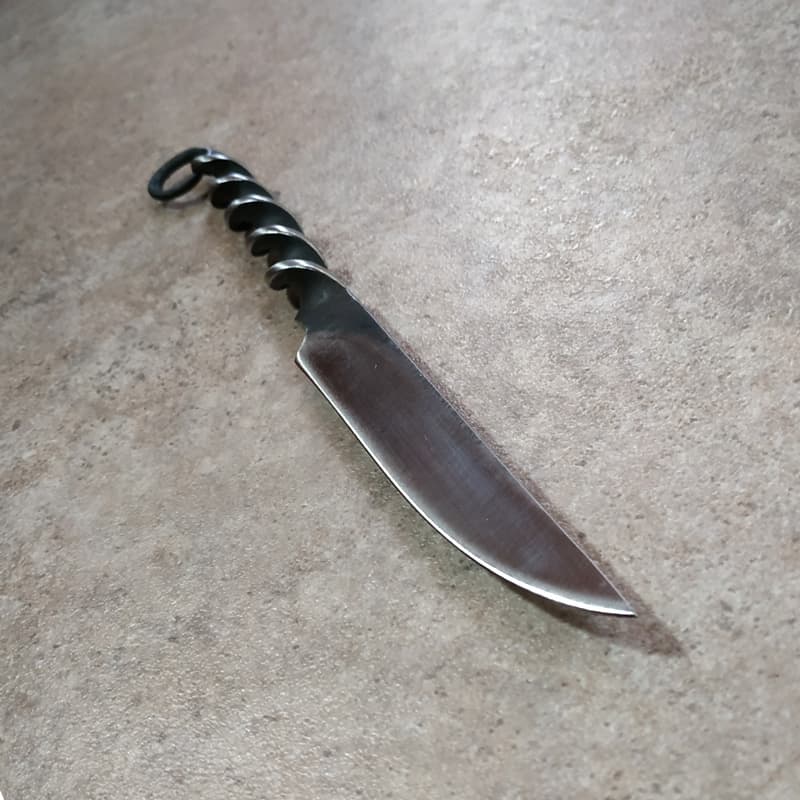
Next in line is the Twisted Steak Knife. This twisted steak knife is going to be a real eye-catcher during your next meal, barbecue, or picnic. It’s made of semi-stainless steel, and the design gives it an authentic rustic look that will impress any of your guests.
With a weight of only 85 g (0.19 lbs) and the ability to cut through anything with ease, this knife is perfect for any home chef.
The blade length means that you can safely use it in your kitchen without worrying about cutting yourself on end-stone or other deeper cuts while cooking up all sorts of food like steak pieces. They are always perfectly shaped, too, thanks to their sharp edge, which never needs sharpening during use.
Other brands
For those looking for a reliable steak knife, the Laguiole en Aubrac steak knives are a also great choice. These knives are crafted with a classic design and feature a high-quality hardwood handle with stainless steel blade. The blades are sharp and can easily cut through steak with ease. Additionally, these knives are known to be durable and can maintain their sharpness over time.
Conclusion
Now that you’ve read our in-depth comparison of serrated vs. non serrated steak knives, you can make an educated decision on which type of knife is best for you. Remember, it all comes down to personal preference.
Well, hang on to what you’re looking for. If you want a knife that’s easy to maintain and can handle tougher cuts of meat, then serrated steak knives are the way to go. However, if you’re looking for a more aesthetically pleasing knife and can easily cut through softer cuts of meat, then non-serrated steak knives are the better option.
Whichever you choose, make sure to shop at a reputable store for the best quality knives.

